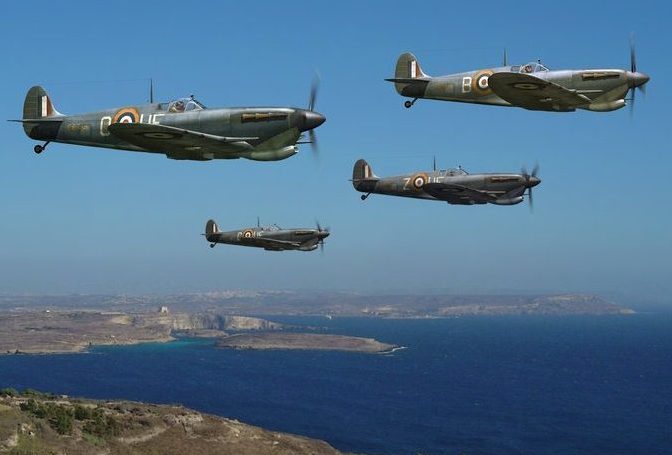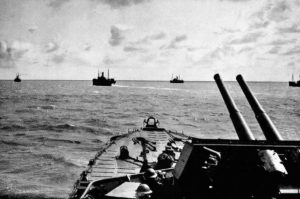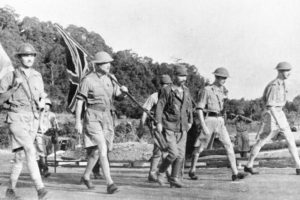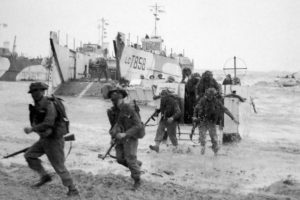(11th June 1940 – 20th November 1942)
For two and half years in what became known as the Battle of Malta, Italy and later Germany laid siege to Malta dropping more bombs on the tiny island than on the entire UK throughout the war.
With the King awarding the George Cross to the people of Malta for their bravery, the battle culminated in mid-1942 when Malta became strategically vital and the RAF’s premier fighter commander, Air Marshall Keith Park arrived and turned the tide against the Luftwaffe.
Tuesday 14th July 1942
Rommel’s Afrika Korps had captured Tobruk and was, once again, pushing the British Eight Army back deep into Egypt. The Japanese had captured Burma, Malaya and Singapore. India was under threat of invasion; and three German Army Groups were pushing ever deeper into Russia with their Army Group South approaching Stalingrad. In the House of Commons, Winston Churchill had, just days before, survived a motion of censure over the direction of the War.
Not making the headlines that day was Malta where, as usual, there was an air raid which was a virtual daily occurrence ever since the Siege of Malta had started two years earlier.
However, to the British war strategist in London led by General Alan Brooke, what was happening in Malta was just as important as in Stalingrad, Singapore or El Alamein.
Malta was the keystone in their plan for winning the war which was based on initially taking control of the Mediterranean.
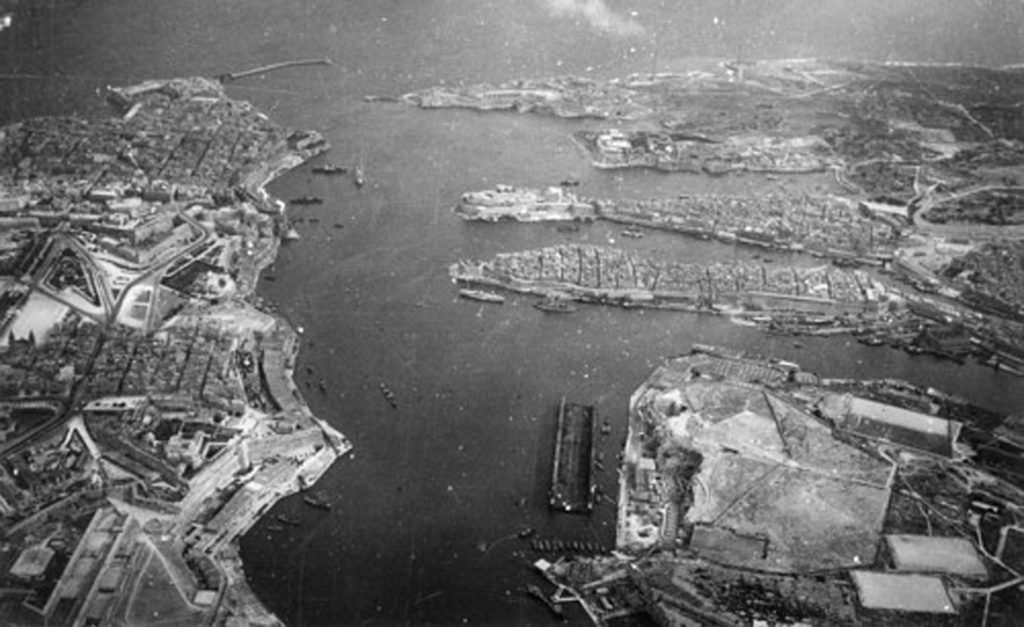
Grand Harbour Valletta during World War Two
In the midst of the air raid on this particular day, a flying boat approached the Grand Harbour in Valletta. Air Commodore Hugh Lloyd, the Air Officer Commanding (AOC) in Malta personally ordered the plane to circle away and to stay clear until the raid was over. But the flying boat took no notice and landed in the Harbour.
Such a flagrant disregard of an order by the AOC was not something that could be ignored. Hugh Lloyd immediately sent for the pilot with the aim of giving him a dressing down. He was expecting some insubordinate junior pilot to enter his office. The man who actually walked in was Air Marshall Keith Park, one of the RAF’s most senior Fighter Commanders and the man who had led the RAF in the Battle of Britain.
Keith Park was considerably the senior of the two, so in the soft but firm manner that he normally adopted, he informed Hugh Lloyd that he had arrived to take over command.
Hugh Lloyd had been a Bomber Commander with little experience of the Fighter tactics required to save Malta. However, Air Chief Marshall Sir Arthur Tedder who was at that time the Air Officer Commander-in-Chief Middle East and who later was to become the Deputy Supreme Commander to General Eisenhower for D-Day and beyond, recognized that the man who had been building up the RAF for the Desert Campaign in North Africa was actually the ideal person for this particular job. He dispatched Keith Park to undertake this vitally important strategic mission.
Malta’s Important Strategic Location
The bombing of Malta was proving to be very severe. More bombs were dropped there than anywhere else during the war including the Blitz and the bombing of London. This had already led the King, just three months before, to award the people of Malta the George Cross for their exceptional bravery.
All this was happening because Malta is located between Sicily and Tunisia and it was in the path of the Axis’s supply lines to the Afrika Korps. Rommel’s army was going to need a constant stream of supplies if it was to defeat the British Eighth Army and snatch control of the Suez Canal upon which Britain depended.
This made the possession of Malta vital to both sides. Winston Churchill went as far as describing the island as Britain’s unsinkable aircraft carrier.
To support Rommel, Germany planned to invade Malta in Operation Hercules but they needed to defeat the RAF first. Despite all their efforts the island’s defences were still holding out in siege-like conditions.
As Spitfire pilot, Herbert Mitchell had written in his diary a few months earlier, “This makes the Battle of Britain seem like child’s play.”
Park takes the Attack to the Enemy
Park decided to employ very different tactics in Malta compared to those he used in the Battle of Britain. Instead of using his fighters in a defensive manner like his predecessors and like he had with his fighting patrols in the Battle of Britain, Park’s plan was to intercept the enemy and break up their formations before they reached Malta.
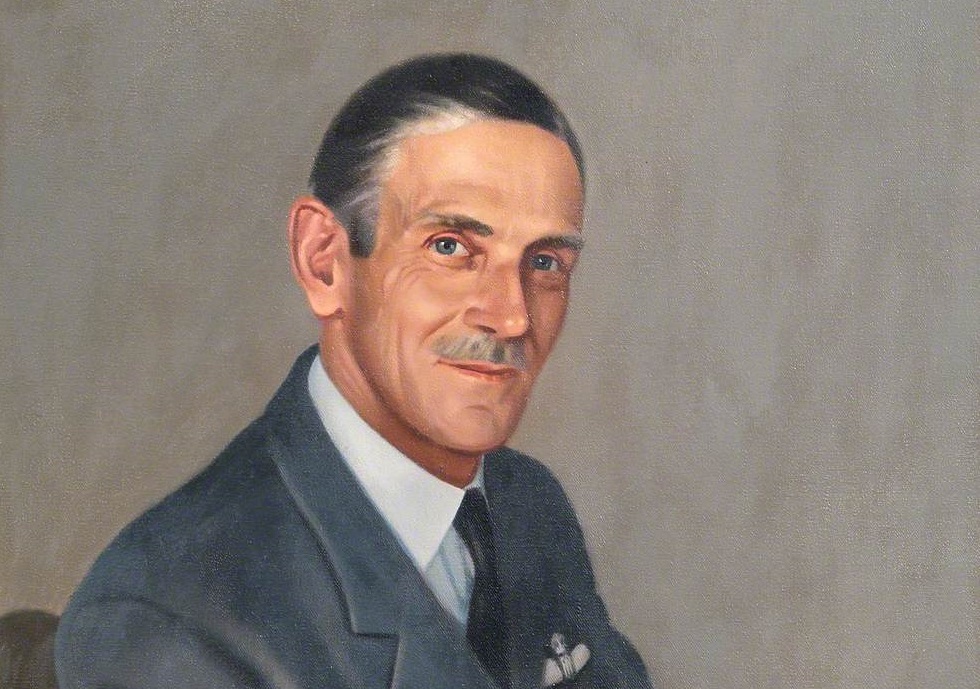
Air Chief Marshall Sir Keith Park
Ever a good organiser and a proven top man manager, Park immediately set about re-organising his squadrons. Their take-off times needed to be much quicker; the way that radar was being used had to be improved; and a new air-sea rescue plan had to be adopted to recover shot down pilots because they were the most important commodity at his disposal.
Eleven days later, on the 25th July, Park had everything in place and was ready to take the battle to the Luftwaffe. By the 31st July 1942, the very day that the 1st Battle of Alamein started, the Luftwaffe had endured unsustainable losses over Malta. Albert Kesselring, the commander-in-chief of Axis forces in the Mediterranean and the man that Park had defeated in the Battle of Britain, called off the attack on Malta.
It had taken Park just six days to defeat the Axis in a battle that had been raging for over two years. The bombing of Malta was over.
Park’s impact on the battle had been dramatic. Using three squadrons at a time working as one unit, he had the first squadron attacked the escort fighters taking them by surprise by flying out of the sun. The second squadron then struck at the close escort or, if there was no close escort, the bombers themselves. Now the third squadron attacked the unprotected bombers.
With the battle won, the RAF provided vital air cover for the ships on their way to Malta to relieve the siege. Together with British submarines, he also attacked the Axis convoys supplying Rommel. His success in Malta was to have a dramatic effect upon the Battles at Alamein which Rommel fought with constant shortages especially of fuel for his Panzers.
The Luftwaffe Attacks Again
However, the Battle of Malta was not quite over. With British control of the skies around Malta, Rommel’s supply situation further deteriorated fast. With a final throw of the dice, the Germans decided to have one last attempt to break Malta. In October, with the Germans aware that the next crucial battle was looming in Egypt (it would be the 2nd Battle of El Alamein) the Luftwaffe renewed its attack on the island.
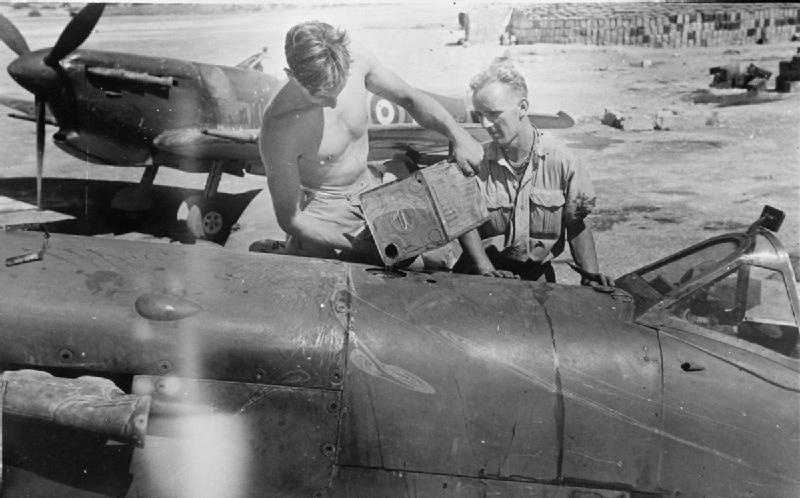
Spitfires being refuelled during the Battle of Malta
For 17 days the Luftwaffe and the RAF slugged it out. But, once again, the Luftwaffe could not withstand their losses as three of their planes were being shot down for every one of the RAF’s. They were forced to call off the assault. That would be the last time that Malta would be threatened. And with the British victory at El Alamein, the Axis forces were now on the back foot in the Mediterranean.
Keith Park had won the Battle of Malta
Keith Park was clearly the architect of the British victory in the Battle of Malta. He had now fought and won two of the most critical air battles of the war making him, arguably, the RAF’s most successful Fighter Air Commander of all time.
In the aftermath of the battle, Park, still based in Malta, provided the vital air cover for the Allies’ invasion of Sicily and later the invasion of mainland Italy at Salerno. And when Arthur Tedder was moved from the Middle East in January 1944 to become Deputy Supreme Commander for D-Day, it was Keith Park who replaced him as Air Officer Commanding-in-Chief Middle East Command with responsibility for the RAF across the entire Mediterranean.

